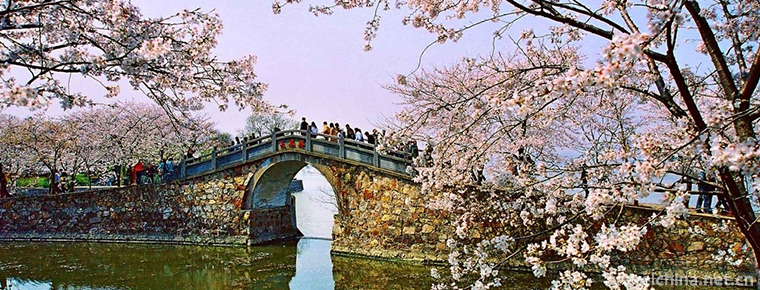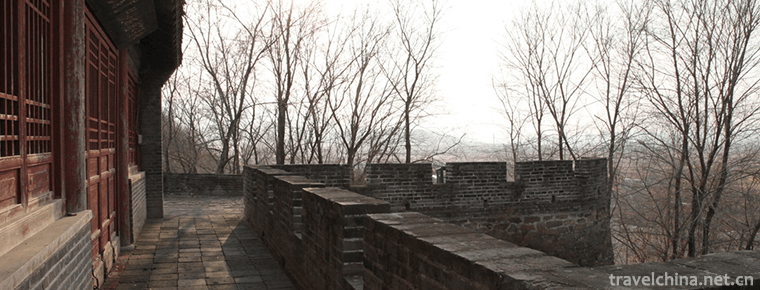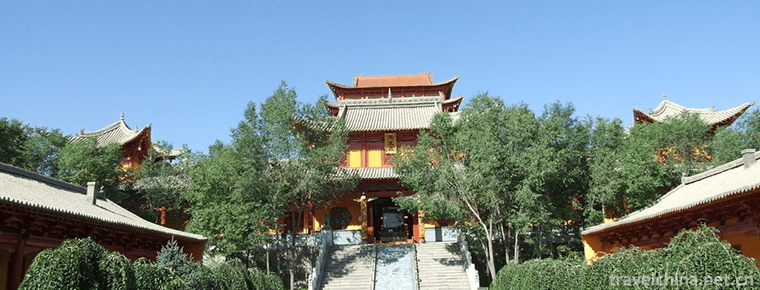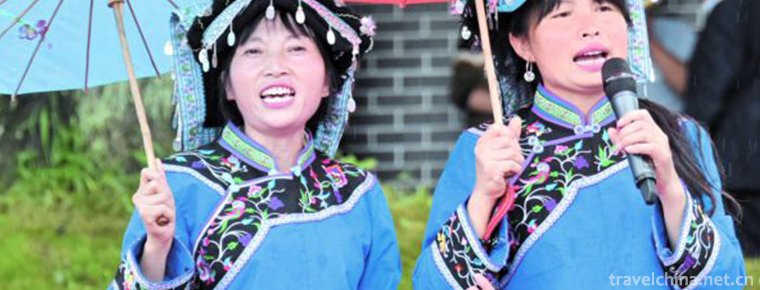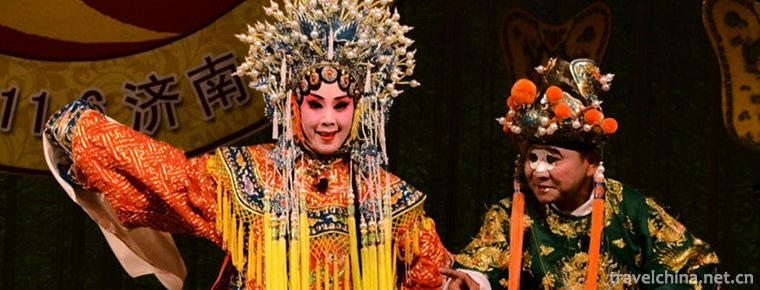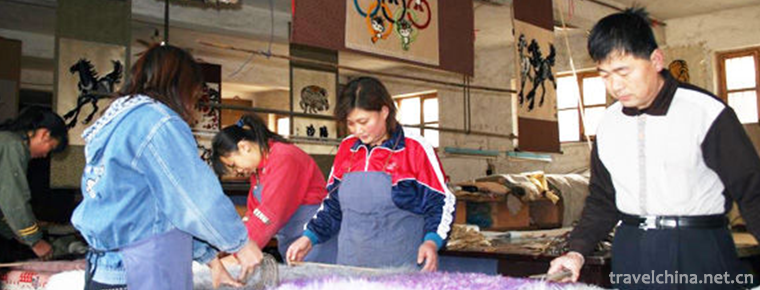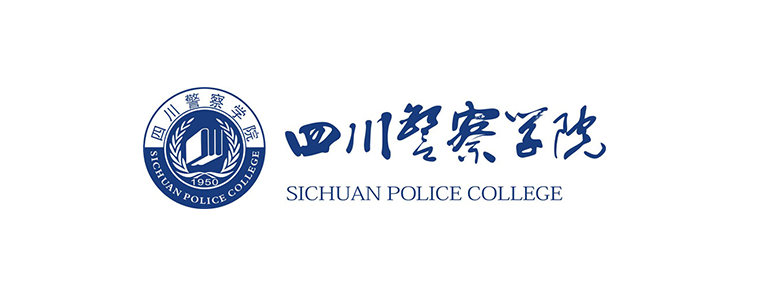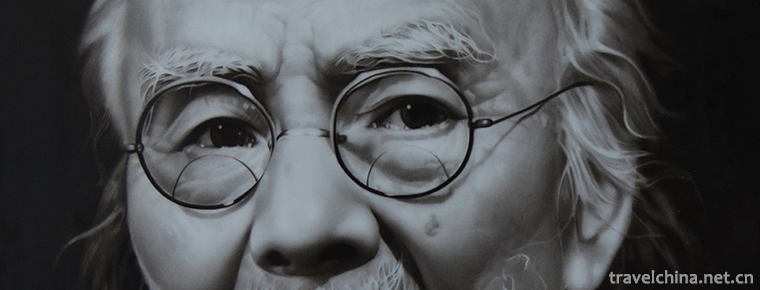Xingguo Folk Song
Xingguo Folk Song
Xingguo Folk Song, a local traditional music in Xingguo County, Jiangxi Province, is one of the national intangible cultural heritage.
Xingguo Folk Song has a long history. It is said that it was sung by woodcutters who built A Fang Palace in Xingguo in the late Qin Dynasty. Xingguo folk songs are lively, diverse in form and full of life. They include solo singing, duet singing, Triple Iron singing, joint singing, rotation singing, lock song, pan song, fighting song, guessing flowers, losing Guanyin loach biting tail, embroidered tapestry, rattan entanglement tree, tree entanglement rattan, etc. Xingguo Folk Song has a wide range of contents, often singing historical stories, legends and news, sometimes impromptu choreography, sometimes long narrative, in a variety of forms.
On May 20, 2006, Xingguo Folk Songs were approved by the State Council of the People's Republic of China to be included in the first batch of national intangible cultural heritage lists. Item number: II-8 .
Xingguo Folk Song has a long history. It is said that it was sung by woodcutters who built A Fang Palace in Xingguo in the late Qin Dynasty. Following the migration of Hakka ancestors from the Central Plains to the south, their ballads penetrated into it, merged with it, continuously transformed and evolved, and took root and blossomed in the Xingguo Mountains. Xingguo folk song has the saying that "from Tang Dynasty, Song Dynasty, Tang and Song Dynasty to the present".
Xingguo Folk Song, once the trumpet of battle, became famous in the struggle of blood and fire in the early 20th century and played an important role in the establishment and consolidation of the red regime.
In the early 1930s, the army and civilians in Jiangxi Province fought five times against encirclement and suppression under extremely difficult conditions. When the women of Xingguo County send their relatives to the front line, they send their new straw shoes and new folk songs.
Since the beginning of reform and opening up, Xingguo County regards the revitalization of national folk songs as an indispensable spiritual food for people, so as to make the national folk songs unprecedented prosperity .
Cultural characteristics
Performing Form
Xingguo Folk Songs can be divided into the following major forms of performance:
Singing harmony in the mountains and fields varies from person to person according to the situation. It covers all aspects of love between men and women, production, life, current affairs and so on.
Dangjiao is divided into Nanhe folk song and Donghe folk song. Nanhe folk song is divided into love song and funny song, which are played and sung in the costume of Gaogong and Gaoma. Donghe folk song is a song of praise.
Folk songs are sung at Temple fairs, weddings and funerals, wedding and birthday celebrations, housing construction, full moon of children, etc. The singers are mostly professional singers; the narrative folk songs are mostly the right and wrong folk songs in mass occasions, which have strong storytelling, often around a certain theme, and are often used by local governments as a means of propaganda work.
Song contest is a special form, that is, singers gather to fight the stage, take the "belly talent" test, more agile than the climax, decided to win or lose after the birth of the master.
Xingguo folk songs can also be divided into tele-singing style folk songs and indoor folk songs according to the form of performance.
The remote-singing folk song is a kind of folk song that is sung in the fields and mountains, and its basic form is seven words and four sentences. However, some singers like to add a sentence with the same sound and rhyme at the end of the sentence, which plays a role in deepening the complement of the previous sentence, and can be grouped into five sentences, commonly known as "three falls", which is a variation of the seven-character and Four-Sentence style.
Indoor folk song, that is, dancing cocktail, is a folk song of singing nature. Indoor folk songs are mainly Narrative Folk songs, which are composed of three parts: song head, song belly and song tail. They have the traditional characteristics of typical limelight, pork belly and leopard tail. The beginning of a song, usually one or two analogous sentences, is used for rising and rhyming; the end of the song, a short and powerful sentence, draws the finishing touches and reveals the theme; and the core part of the whole song is the belly of the song. The content of the song belly can be expanded indefinitely, with three or five sentences at a minimum and one or two hundred sentences at a maximum, depending on the needs of the singer and the plot development.
However, whether it is telephonic folk songs or indoor folk songs, there is a common prominent feature: impromptu singing. Immediate situation, temporary compilation, export chapter. Therefore, the level of Xingguo folk songs mainly depends on the ability of singers to improvise. A good singer can often make a lot of witty remarks and get the effect of climax .
Singing Form
Xingguo folk song has developed from Solo and duet singing to joint singing, chorus and minor singing, and has also created a new type of Xingguo mountain opera. In the form of singing, Xingguo folk songs have a distinct feature different from other folk songs. Each song begins with a yah and yah, which has a strong sense of music melody. With the excitement bursting out, its singing sound is like a wave in the water, surging and surging, with a great potential of catharsis for thousands of miles. In the middle of the song, different singers with different ups and downs form their own singing styles, or high-spirited, or low-lingering euphemism; and before singing the ending sentence, there is a echo of the heart and soul brother, mostly called Comrade brother, which echoes with the beginning of Ouch, forming a complete and unique singing style of Xingguo Mountain Song.
In Narrative Folk songs, because of their long length, they are often sung by two or three people, commonly known as "three dozen iron". Singers use gongs on one side, after each fall, to hit the gong for a moment to help the singer breathe; second, to provide a moment for the singer to think about his abdominal manuscript; third, to play a role of turning the tone through the door .
Singing content
Xingguo Folk Song has a wide range of contents, often singing historical stories, legends and news, sometimes impromptu choreography, sometimes long narrative, in a variety of forms. After liberation, many music works on the revolutionary history of Jinggangshan and Gannan base areas often used it as the material for creation, such as "Red Army Base Chorus" and "Jinggangshan Chorus".
Artistic Techniques
Xingguo Folk Song is the slogan of labor, floating in the fields and forests, trembling on the bent poles and twisting on the spinning wheels, which not only stimulates energy, but also eliminates fatigue.
Xingguo Folk Song inherits the traditional methods of Fu, Bi and Xing, and constantly enriches and develops in the long-term practice of singing.
The reason why Xingguo folk songs can last forever and spread widely is because of the local conditions and mud flavor. They all sing the joys, anger and sorrows of the common people. They come in handy and export into songs.
Xingguo folk song is the mirror of life. It reflects the colorful life. Lovers, tea and guests, praying for good luck and disaster, red and white good things are included in it. Especially love songs use metaphor, metaphor, pun and other techniques, full of interest .
Representative Works
The representative repertoires of Xingguo folk songs include "Mustard Core in Garden", "Embroidered Incense Bag", "Top Yuanlang in Travel" and "Zan Baxian".
Inheritance and Protection
Inheritance value
Xingguo folk songs are rooted in the deep soil of Hakka culture, covering all aspects of Hakka life, and full of rich Hakka cultural information. In a sense, Xingguo Folk Song is a historical picture of the Hakka people.
Heritage figures
Wang Goodwill, male, was born in June 1941. The third batch of national intangible cultural heritage projects are representative inheritors of Xingguo folk songs.
Xu Shengchang, male, Han nationality, born in 1926, Xingguo, Jiangxi Province. The second batch of national intangible cultural heritage projects are representative inheritors of Xingguo folk songs. Since childhood, he loved folk singing very much. In 1947, he worshiped Zhu Xianzhao, a folk artist, as a teacher, and began his career as a professional singer by learning to dance with the combination of charm chanting, flower guessing and folk singing. After the founding of New China, amateur folk song singing teams from counties and townships went to various villages to sing until they were 80 years old, and taught many folk song heirs. Its performance and singing and dancing, men dressed as women, impromptu singing, vivid image, loud voice, has its own unique artistic style, many times won the county's mountain song contest "excellent singer" title.
protective measures
On August 10, 2018, Xingguo County held a training course for inheritors of Xingguo Folk Songs. Nearly 80 Xingguo Folk Song enthusiasts from all townships in the county participated in the training. Through the training, the students not only grasp the basic singing skills of folk songs, achieve the expected goal of the training, but also stimulate the enthusiasm of literary and artistic enthusiasts to participate in learning. At the same time, the Xingguo folk songs are better protected .
social influence
Honorary recognition
In December 2018, Xie Lihua, the representative inheritor of Xingguo Folk Songs at the municipal level, participated in the invitation competition of Yangtai Mountain National Actual Folk Songs at the Hakka Culture and Art Festival of China Longhua. The participating song was a Xingguo Folk Song "Dazhi Folk Songs Crossing the Row", which won the silver prize in the competition .
Important activities
On the evening of November 23, 2018, the exhibition was sponsored by Ganzhou Culture, Radio, Television, Press and Publishing Bureau, Ganzhou Non-material Cultural Heritage Protection Center, Gannan Art Creation Research Institute, Ganzhou Culture Museum, County (City, District) Culture, Radio, Television, Press and Publishing Bureau, and co-sponsored by the Research and Protection Center of Non-material Cultural Heritage of County (City, District). It shows that traditional art carries forward Hakka culture. "Ganzhou 2018 Traditional Performing Arts intangible cultural heritage exhibition was held in Xingguo County Youth Academic Reporting Hall, and Xingguo Mountain Song"You Are Having a Good Time"was staged in the exhibition evening.

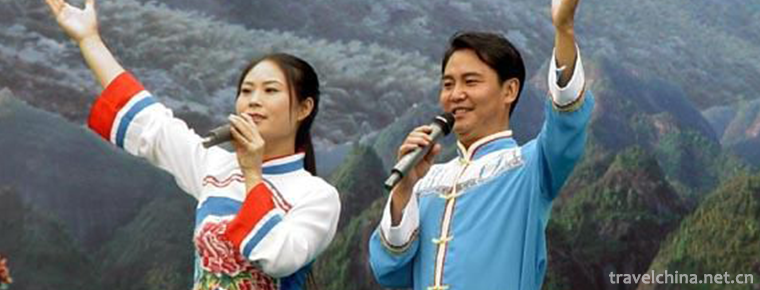
Xingguo Folk Song
-
Turtle Head Islet
Yuantouzhu is a peninsula lying on the northwest coast of Taihu Lake in Wuxi. It is named for its huge stone bursting into the lake in the shape of a tortoise with its head held high. Yuantouzhu
Views: 203 Time 2018-12-06 -
The ancient city of Hetuala
The ancient city of Hetuala is located in Yongling Town, Xinbin Manchu Autonomous County, Liaoning Province. It is 5 kilometers west of Qingyongling
Views: 229 Time 2019-01-13 -
Shandan Great Buddhist Temple
Shandan Grand Buddha Temple is located at the foot of the mountain 5 kilometers west of Shandan County, Zhangye City, Gansu Province. The old name of "Tufo Temple" was built in the Northern
Views: 186 Time 2019-02-08 -
Buyi Chabai Song Festival
The Buyi Chabaige Festival is a commemorative festival of the Buyi people in Xingyi, southwest Guizhou Province. It is held in Chabaichang, Dingxiao Town, Xingyi City
Views: 180 Time 2019-04-04 -
Red boxing
Red boxing originated in Zhou and Qin Dynasties, became famous in Tang and Song Dynasties and prevailed in Ming and Qing Dynasties. It is an important link
Views: 195 Time 2019-05-03 -
Legend of Luban
productivity and the change of production tools have created conditions for the improvement of technology.
Views: 267 Time 2019-05-15 -
Shangdong clapper opera
Shandong Bangzi is a traditional local opera popular in Southwest Shandong and Central Shandong. Also known as "high-profile Bangzi", short for "high-profile" or "high-profile
Views: 208 Time 2019-06-13 -
Tanning Technology of Tan Sheepskin
Tanning process of Tan sheepskin in Jiaocheng County is relatively complex, totally depending on manual operation. There are more than 20 processes such as washing, soaking, drying, shoveling, nailing
Views: 274 Time 2019-06-18 -
Sichuan Police College
Sichuan Police College is the only full-time undergraduate college of political, legal and public security in Sichuan Province, which is sponsored by the People's Government of Sichuan Province and jo
Views: 143 Time 2019-08-31 -
Qi baishi
Qi Baishi (January 1, 1864 - September 16, 1957), formerly known as Zhi Zhi, the word Wei Qing, No. Lanting Pavilion, later renamed Huang, the word is on the edge, the number of Bai Shi, white stone m
Views: 314 Time 2019-09-04 -
Mount Fulai
Mount Fulai is one of the top 40 tourist attractions in China. It is 27 kilometers away from Shunan Bamboo Sea central scenic spot and 10 kilometers away from qidonggou, a 4A tourist attraction. It is composed of more than 80 hills.
Views: 178 Time 2020-10-16 -
Modern cheongsam
At the beginning of the 20th century, it was popular to wear a short jacket with trumpet shaped wide sleeves inside, and a long waistcoat without sleeves with the front and back of the coat reaching the ground. Since then, cheongsam has made some changes in the edge, sleeve
Views: 126 Time 2020-12-11
